Fast Fabrication of Fishnet Optical Metamaterial Based on Femtosecond Laser Induced Stress Break Technique
Abstract
1. Introduction
2. Materials and Methods
2.1. Materials
2.2. Morphology Characterization
2.3. Spectral Characterization
2.4. Theorectical Simulation of the Fishnet MM for fs Laser Fabrication
2.5. fs Laser Fabrication of Fishnet MMs
3. Results and Discussions
3.1. Geometry of Au Film, MgF2 Films, and Au-MgF2-Au Film Ablated by fs Laser
3.2. Spectrum Measurement of Fishnet Metamaterial Fabricated by Stress Break
4. Conclusions
Author Contributions
Funding
Institutional Review Board Statement
Informed Consent Statement
Data Availability Statement
Acknowledgments
Conflicts of Interest
References
- Smith, D.R.; Padilla, W.J.; Vier, D.C.; Nemat-Nasser, S.C.; Schultz, S. Composite Medium with Simultaneously Negative Permeability and Permittivity. Phys. Rev. Lett. 2000, 84, 4184. [Google Scholar] [CrossRef] [PubMed]
- Nahata, A.; Linke, R.A.; Ishi, T.; Ohashi, K. Enhanced nonlinear optical conversion from a periodically nanostructured metal film. Opt. Lett. 2003, 28, 423–425. [Google Scholar] [CrossRef]
- Ghaemi, H.F.; Thio, T.; Grupp, D.E. Surface plasmons enhance optical transmission through subwavelength holes. Phys. Rev. B 1998, 58, 6779. [Google Scholar] [CrossRef]
- Chen, X.; Chen, X.; Wu, Z.; Zhang, Z.; Wang, Z.; Heng, L.; Wang, S.; Zou, Y.; Tang, Z. An ultra-broadband and lightweight fishnet-like absorber in microwave region. J. Phys. D Appl. Phys. 2018, 51, 285002. [Google Scholar] [CrossRef]
- Paniagua-Domínguez, R.; Yu, Y.F.; Khaidarov, E.; Choi, S.; Leong, V.; Bakker, R.M.; Liang, X.; Fu, Y.H.; Valuckas, V.; Krivitsky, L.A.; et al. A metalens with near-unity numerical aperture. Nano Lett. 2018, 18, 2124–2132. [Google Scholar] [CrossRef]
- Lai, Y.; Chen, H.; Zhang, Z.Q.; Chan, C.T. Complementary Media Invisibility Cloak that Cloaks Objects at a Distance Outside the Cloaking Shell. Phys. Rev. Lett. 2009, 102, 93–96. [Google Scholar] [CrossRef] [PubMed]
- Cummer, S.A.; Popa, B.I.; Schurig, D.; Smith, D.R. Full-wave simulations of electromagnetic cloaking structures. Phys. Rev. E Stat. Nonlinear Soft Matter Phys. 2006, 74, 036621. [Google Scholar] [CrossRef]
- Zhang, X.; Liu, Z. Superlenses to overcome the diffraction limit. Nature Mater. 2008, 7, 435–441. [Google Scholar] [CrossRef]
- Pendry, J.B.; Holden, A.J.; Stewart, W.J.; Youngs, I. Extremely low frequency plasmons in metallic mesostructures. Phys. Rev. Lett. 2001, 87, 4773–4776. [Google Scholar] [CrossRef]
- Linden, S.; Enkrich, C.; Wegener, M.; Zhou, J.; Koschny, T.; Soukoulis, C.M. Magnetic response of metamaterials at 100 terahertz. Science 2004, 306, 1351–1353. [Google Scholar] [CrossRef] [PubMed]
- Dolling, G.; Enkrich, C.; Wegener, M. Low-loss negative-index metamaterial at telecommunication wavelengths. Opt. Lett. 2006, 31, 1800–1802. [Google Scholar] [CrossRef] [PubMed]
- Zhang, S.; Fan, W.; Panoiu, N.C.; Malloy, K.J.; Osgood, R.M.; Brueck, S.R.J. Experimental demonstration of near-infrared negative-index metamaterials. Phys. Rev. Lett. 2005, 95, 137404. [Google Scholar] [CrossRef] [PubMed]
- Dolling, G.; Enkrich, C.; Wegener, M.; Soukoulis, C.M.; Linden, S. Simultaneous Negative Phase and Group Velocity of Light in a Metamaterial. Science 2006, 312, 892–894. [Google Scholar] [CrossRef]
- Dolling, G.; Wegener, M.; Soukoulis, C.M.; Linden, S. Negative-index metamaterial at 780 nm wavelength. Opt. Lett. 2007, 32, 53–55. [Google Scholar] [CrossRef]
- Enkrich, C.; Perez-Willard, F.; Gerthsen, D.; Zhou, J.F.; Koschny, T.; Soukoulis, C.M.; Wegener, M.; Linden, S. Focused-Ion-Beam Nanofabrication of Near-Infrared Magnetic Metamaterials. Adv. Mater. 2005, 17, 2547–2549. [Google Scholar] [CrossRef]
- Seniutinas, G.; Balcytis, A.; Nishijima, Y.; Nadzeyka, A.; Bauerdick, S.; Juodkazis, S. Ion beam lithography with gold and silicon ions. Appl. Phys. A 2016, 12, 1–6. [Google Scholar] [CrossRef]
- Bassim, N.D.; Giles, A.J.; Ocola, L.E.; Caldwell, J.D. Fabrication of phonon-based metamaterial structures using focused ion beam patterning. Appl. Phys. Lett. 2018, 112, 091101. [Google Scholar] [CrossRef]
- Wu, W.; Yu, Z.; Wang, S.Y.; Williams, R.S. Midinfrared metamaterials fabricated by nanoimprint lithography. Appl. Phys. Lett. 2007, 90, 509. [Google Scholar] [CrossRef]
- Feth, N.; Enkrich, C.; Wegener, M.; Linden, S. Large-area magnetic metamaterials via compact interference lithography. Opt. Express 2007, 15, 501–507. [Google Scholar] [CrossRef]
- Stuart, B.C.; Feit, M.D.; Herman, S.; Rubenchik, A.M.; Shore, B.W.; Perry, M.D. Nanosecond-to-femtosecond laser-induced breakdown in dielectrics. Phys. Rev. B 1996, 53, 1749. [Google Scholar] [CrossRef]
- Qiu, T.Q.; Tien, C.L. Heat transfer mechanisms during short-pulse laser heating of metals. J. Heat Transf. 1993, 115, 835–841. [Google Scholar] [CrossRef]
- Johnson, P.B.; Christy, R.W. Optical Constants of the Noble Metals. Phys. Rev. B (Solid State) 1972, 6, 4370–4379. [Google Scholar] [CrossRef]
- Smith, D.R.; Schultz, S.; Markoš, P.; Soukoulis, C.M. Determination of effective permittivity and permeability of metamaterials from reflection and transmission coefficients. Phys. Rev. B 2002, 65, 195104. [Google Scholar] [CrossRef]
- Smith, D.R.; Vier, D.C.; Koschny, T.; Soukoulis, C.M. Electromagnetic parameter retrieval from inhomogeneous metamaterials. Phys. Rev. E 2005, 71, 036617. [Google Scholar] [CrossRef]
- Zhou, J.; Koschny, T.; Kafesaki, M.; Economou, E.N.; Pendry, J.B.; Soukoulis, C.M. Saturation of the Magnetic Response of Split-Ring Resonators at Optical Frequencies. Phys. Rev. Lett. 2005, 95, 223902. [Google Scholar] [CrossRef]
- Liu, J.M.; Bloembergen, N. Femtosecond Laser Interaction with Metallic Tungsten and Nonequilibrium Electron and Lattice Temperatures. Phys. Rev. Lett. 1984, 53, 1837–1840. [Google Scholar]
- Chichkov, B.N.; Momma, C.; Nolte, S.; Alvensleben, F.V.; Tunnermann, A. Femtosecond, piscosecond and nanosecond laser ablation of solids. Appl. Phys. A 1996, 63, 109–115. [Google Scholar] [CrossRef]
- Lenzner, M.; Krüger, J.; Sartania, S.; Cheng, Z.; Spielmann, C.; Mourou, G.; Kautek, W.; Krausz, F. Femtosecond Optical Breakdown in Dielectrics. Phys. Rev. Lett. 1998, 80, 4076–4079. [Google Scholar] [CrossRef]
- Chen, F.; Wu, T.H.; Zhou, X.P. The photodegradation of acetone over VOx/MgF2 catalysts. Catal. Commun. 2008, 9, 1698–1703. [Google Scholar] [CrossRef]
- Ditmire, T.; Tisch, J.W.G.; Springate, E.; Mason, M.B.; Hay, N.; Smith, R.A.; Marangos, J.; Hutchinson, M.H.R. High-energy ions produced in explosions of superheated atomic clusters. Nature 1997, 386, 54–56. [Google Scholar] [CrossRef]
- Bulgakova, N.M.; Bourakov, I.M.; Bulgakova, N.A. Rarefaction shock wave: Formation under short pulse laser ablation of solids. Phys. Rev. E 2001, 63, 046311. [Google Scholar] [CrossRef] [PubMed]
- Raether, H. Surface Plasmons on Smooth and Rough Surfaces and on Gratings; Springer: Berlin/Heidelberg, Germany, 1988. [Google Scholar]
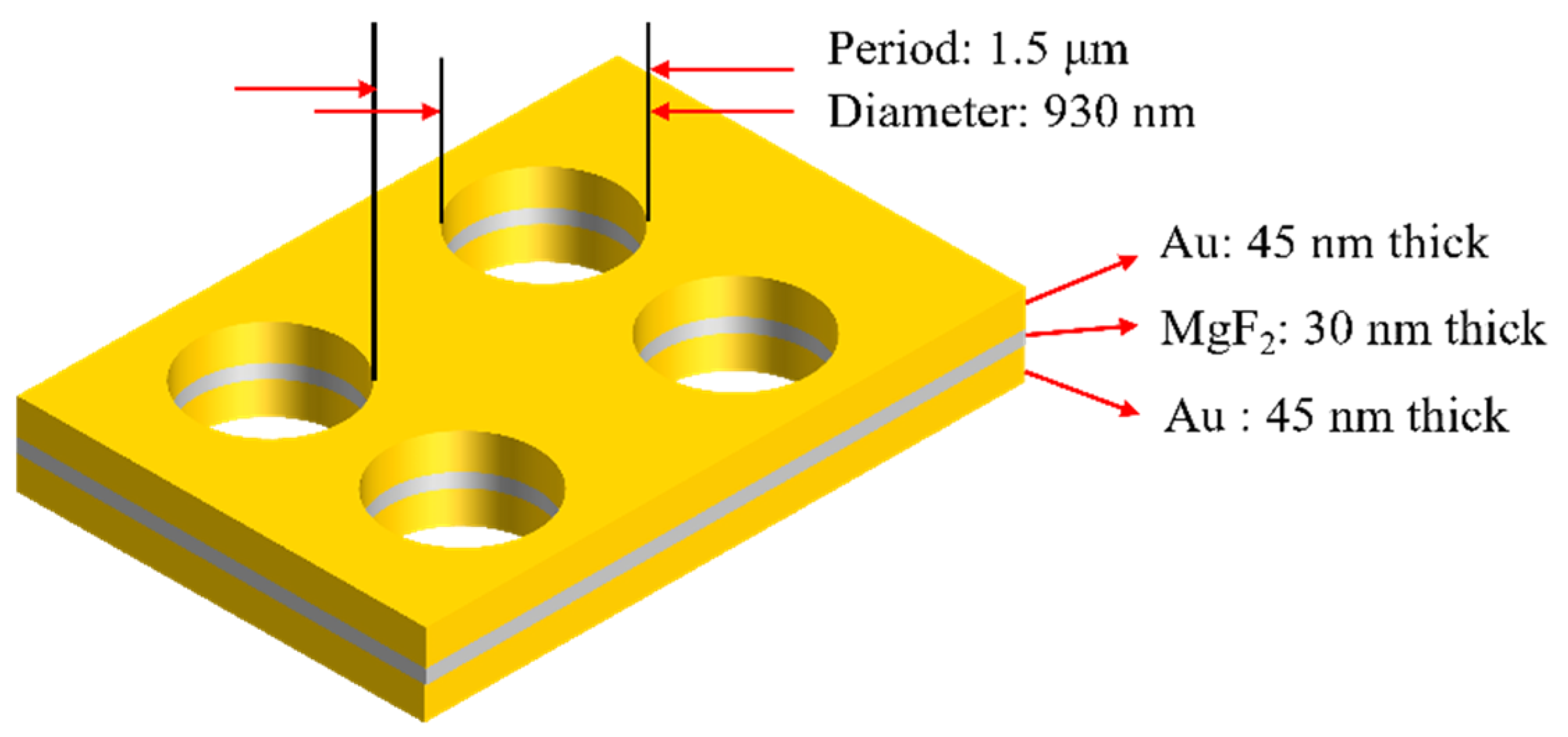
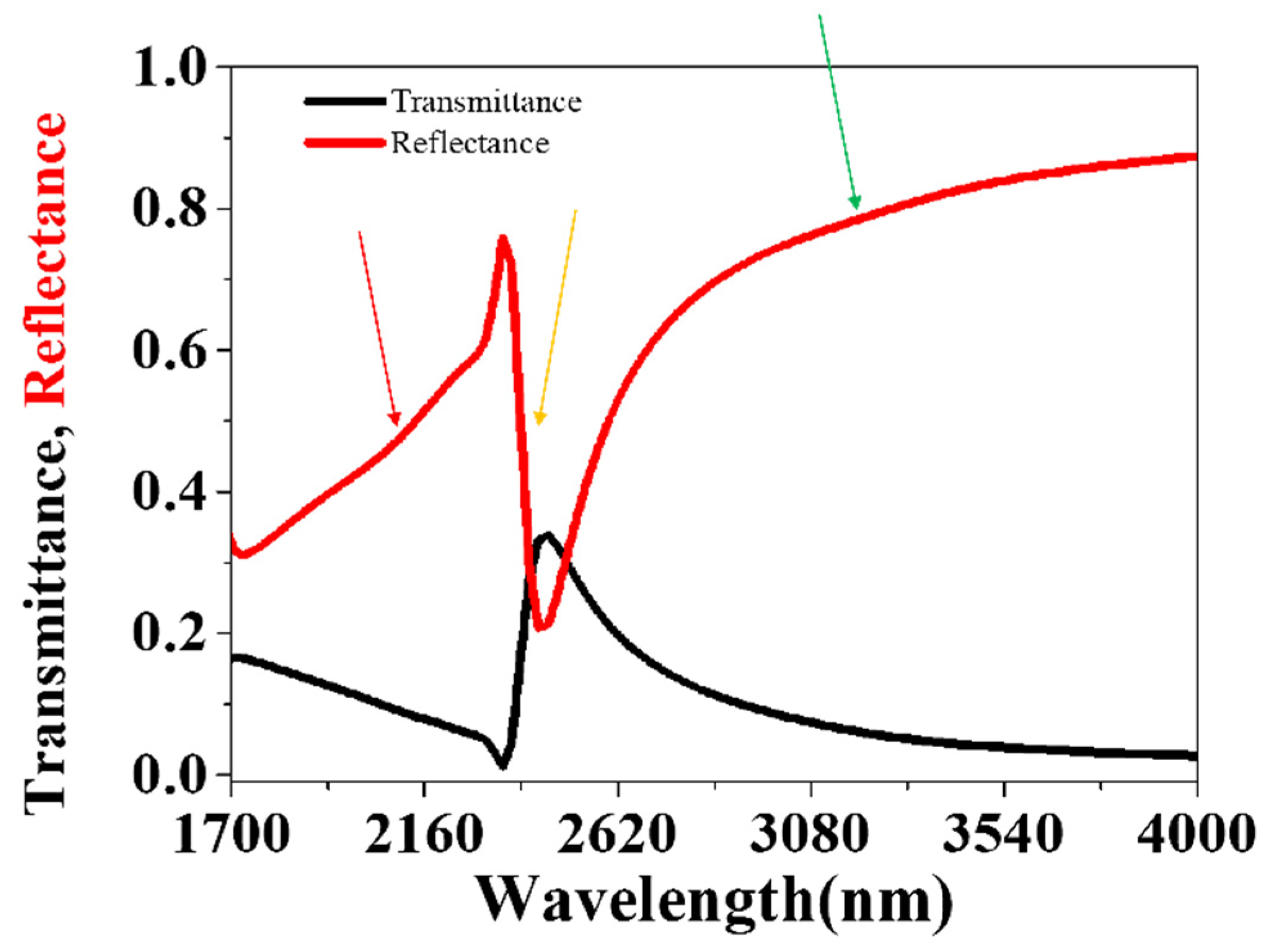
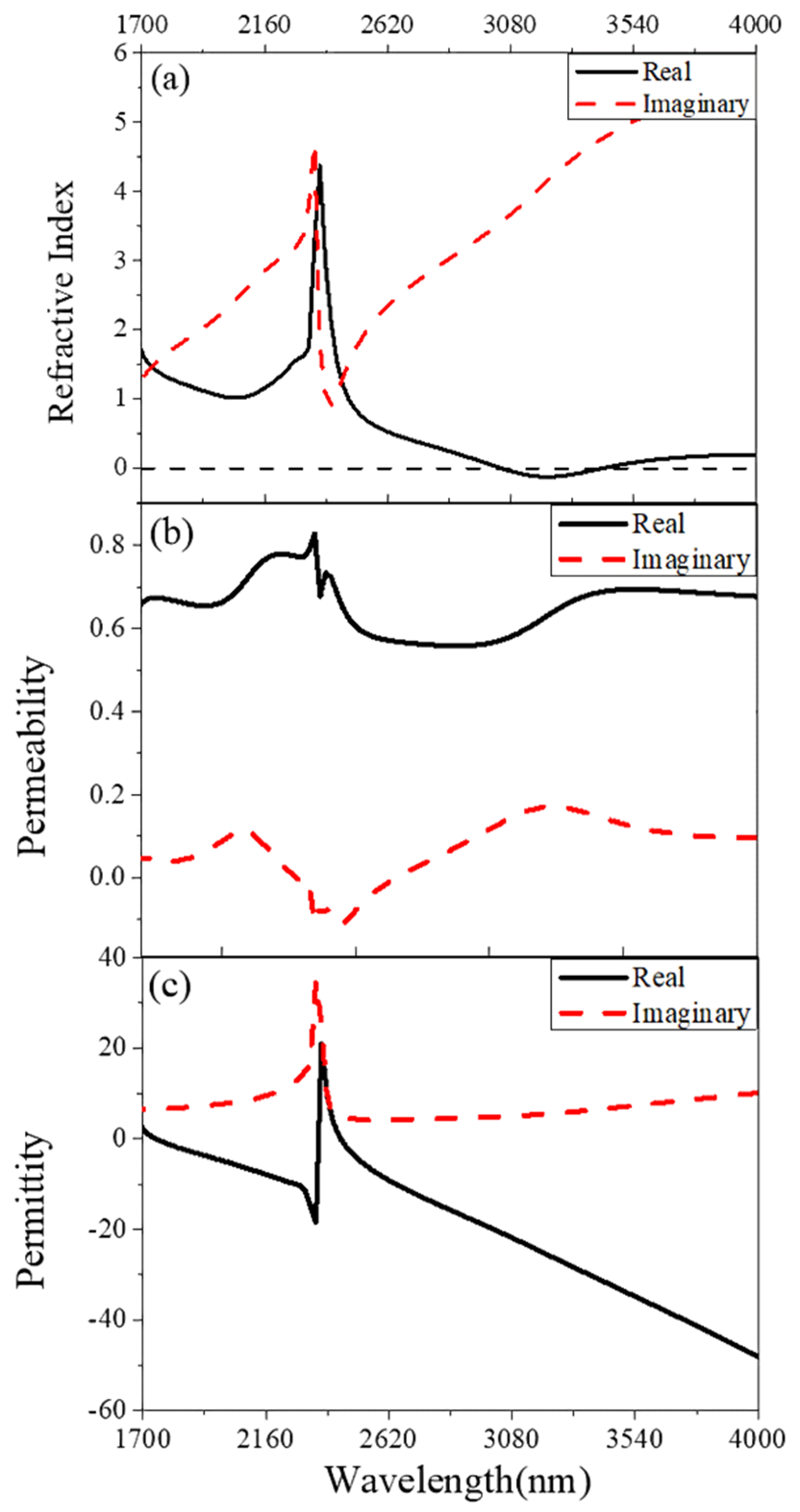
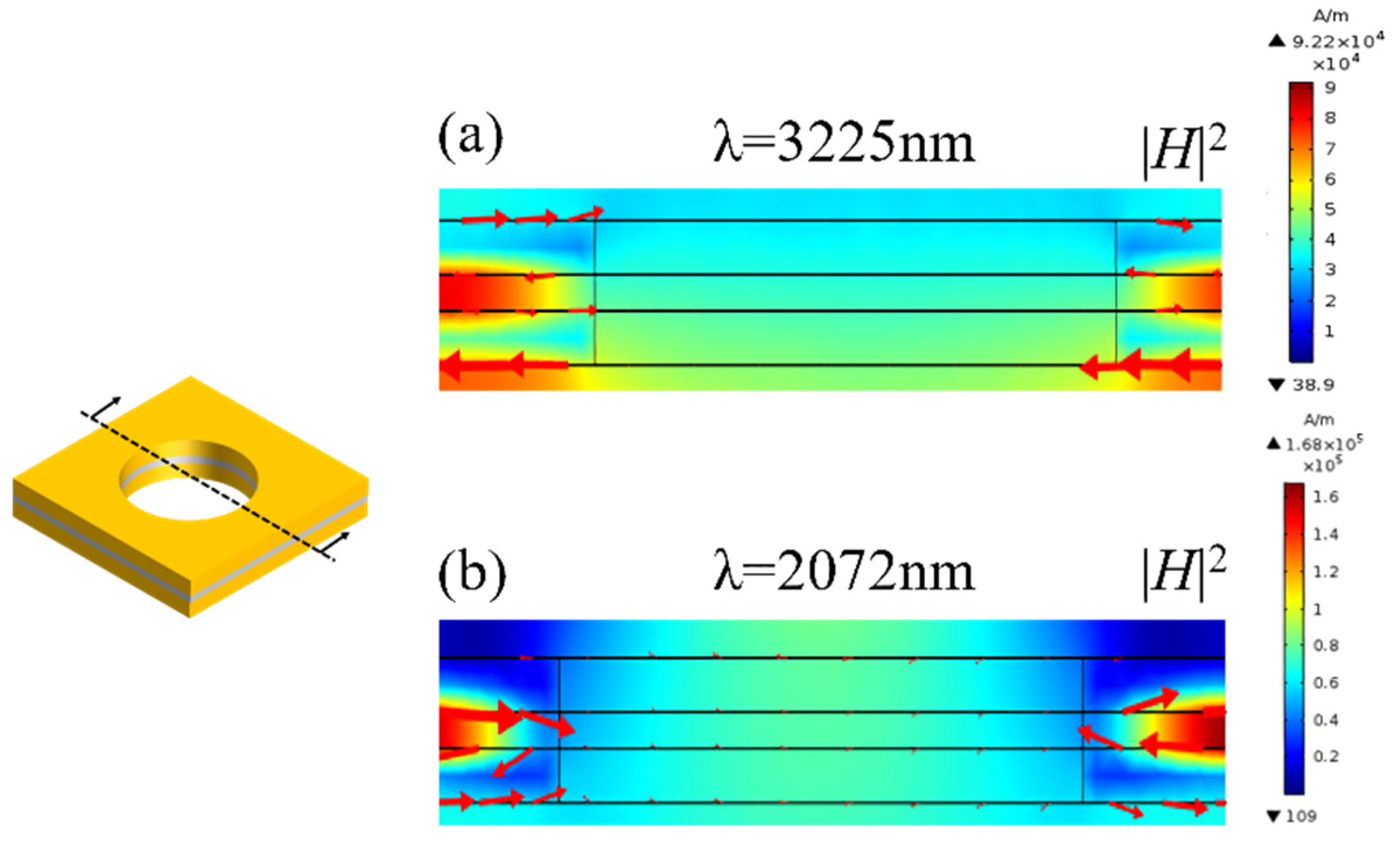

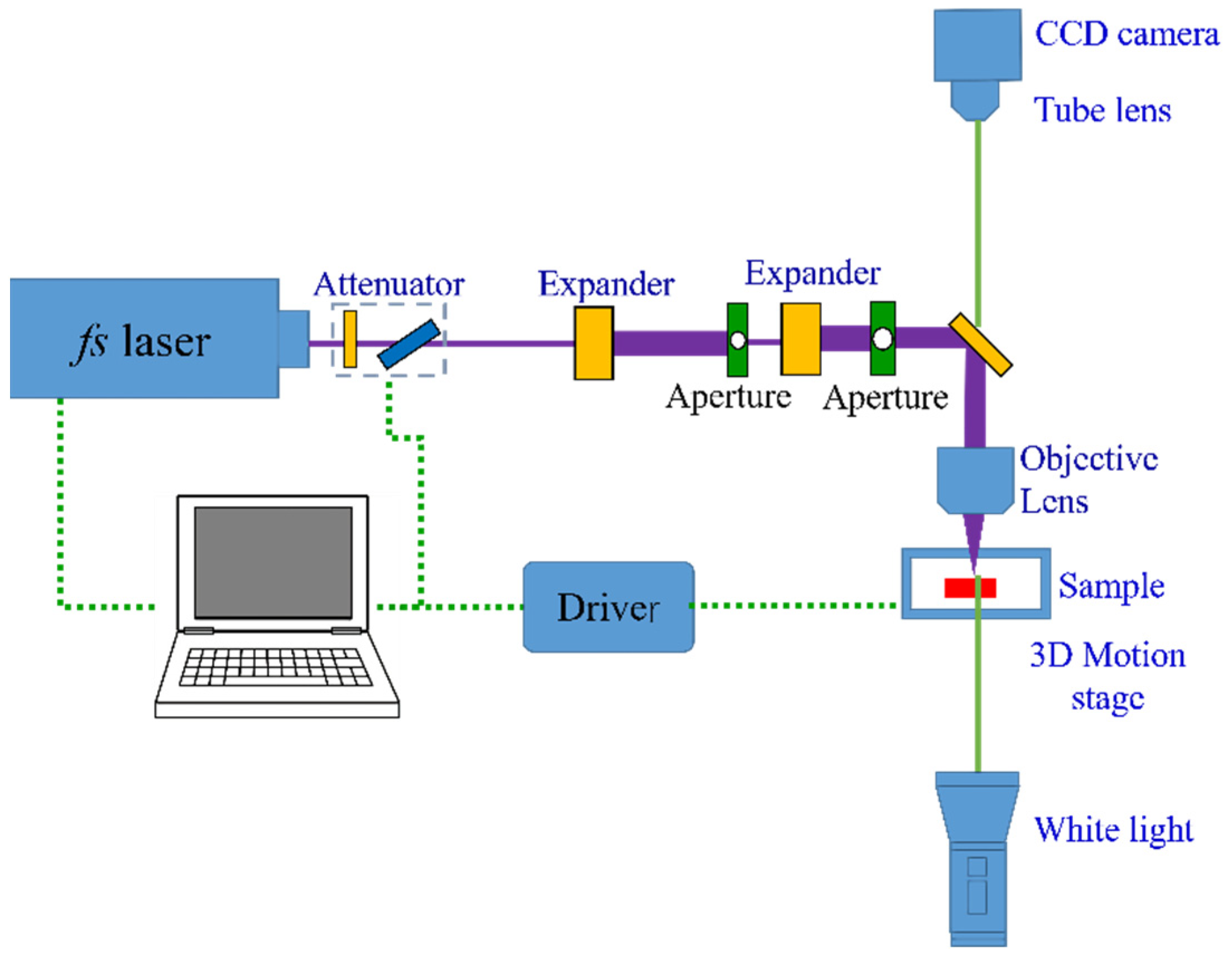
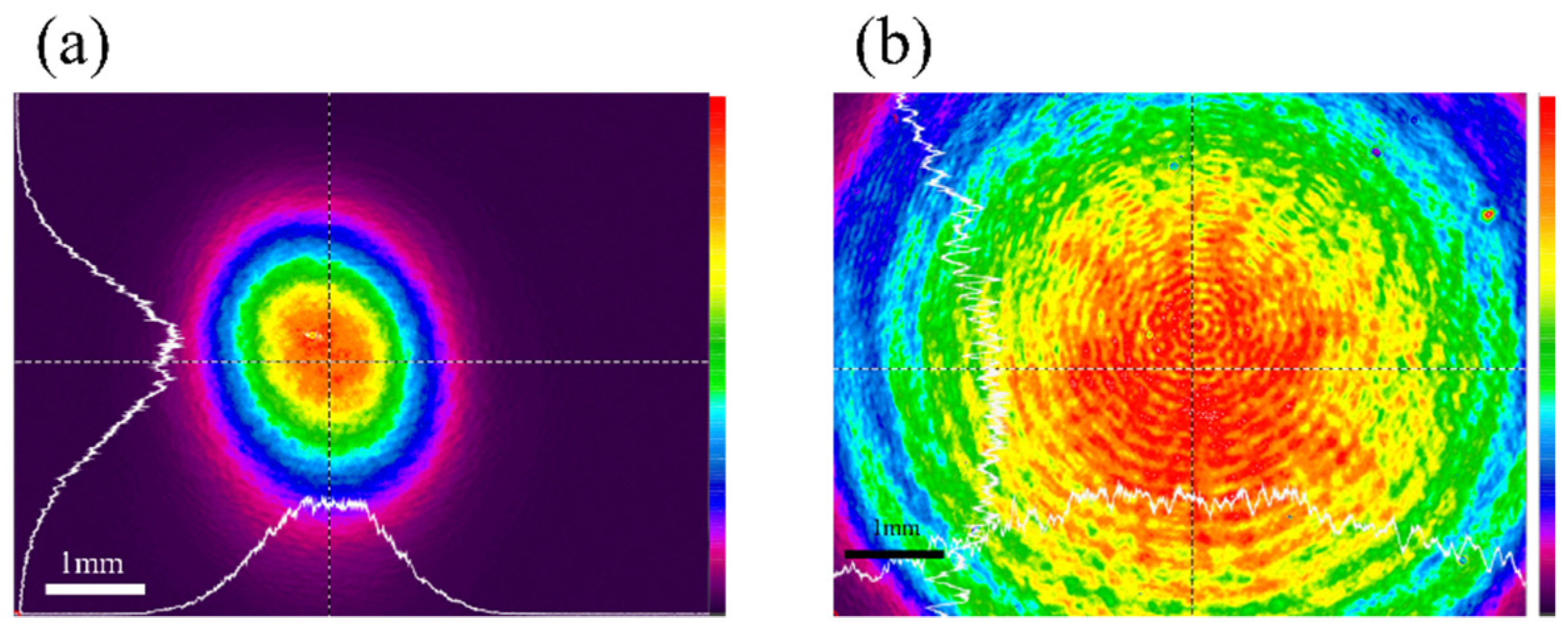


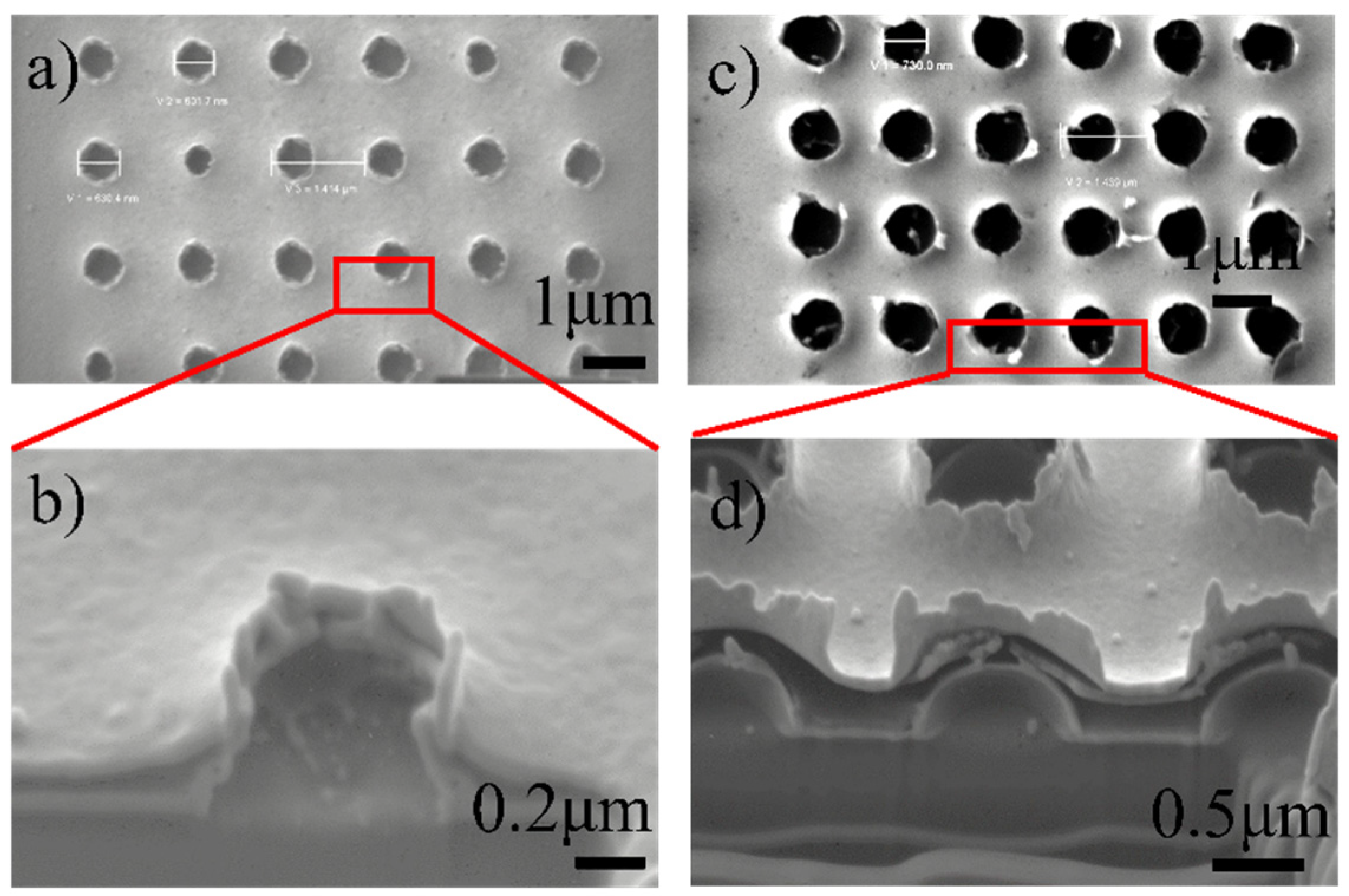
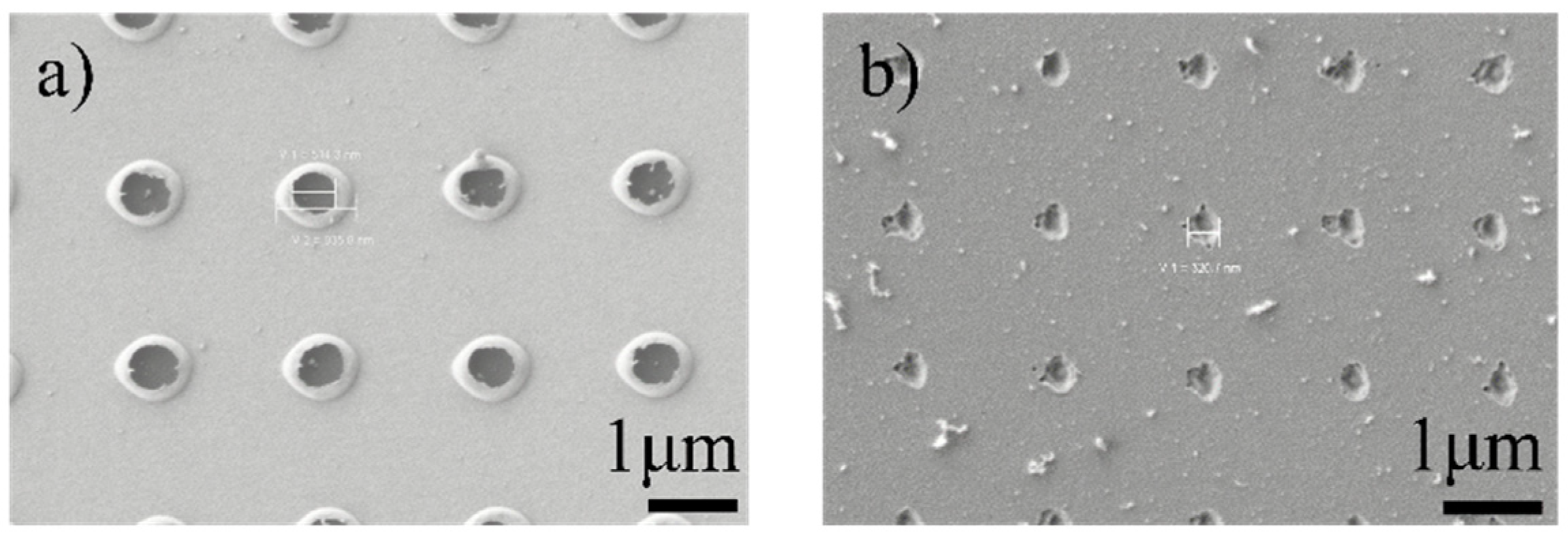
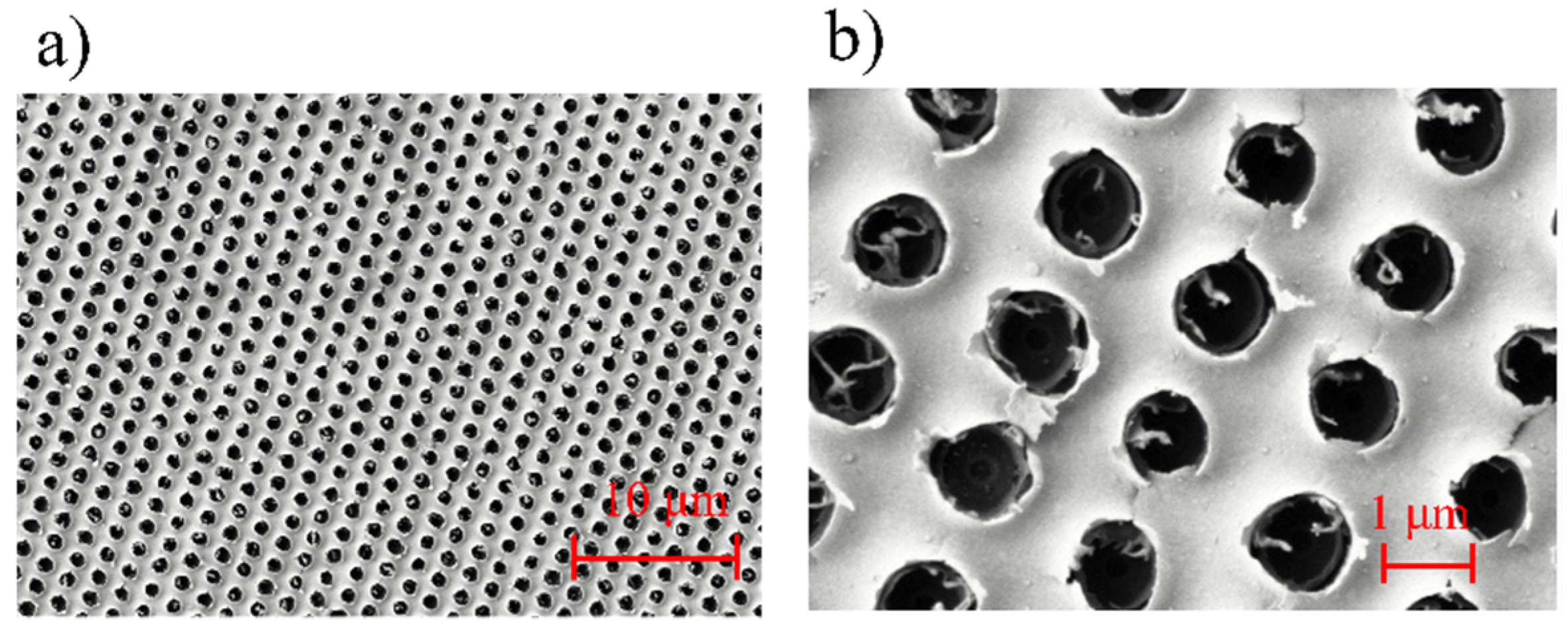
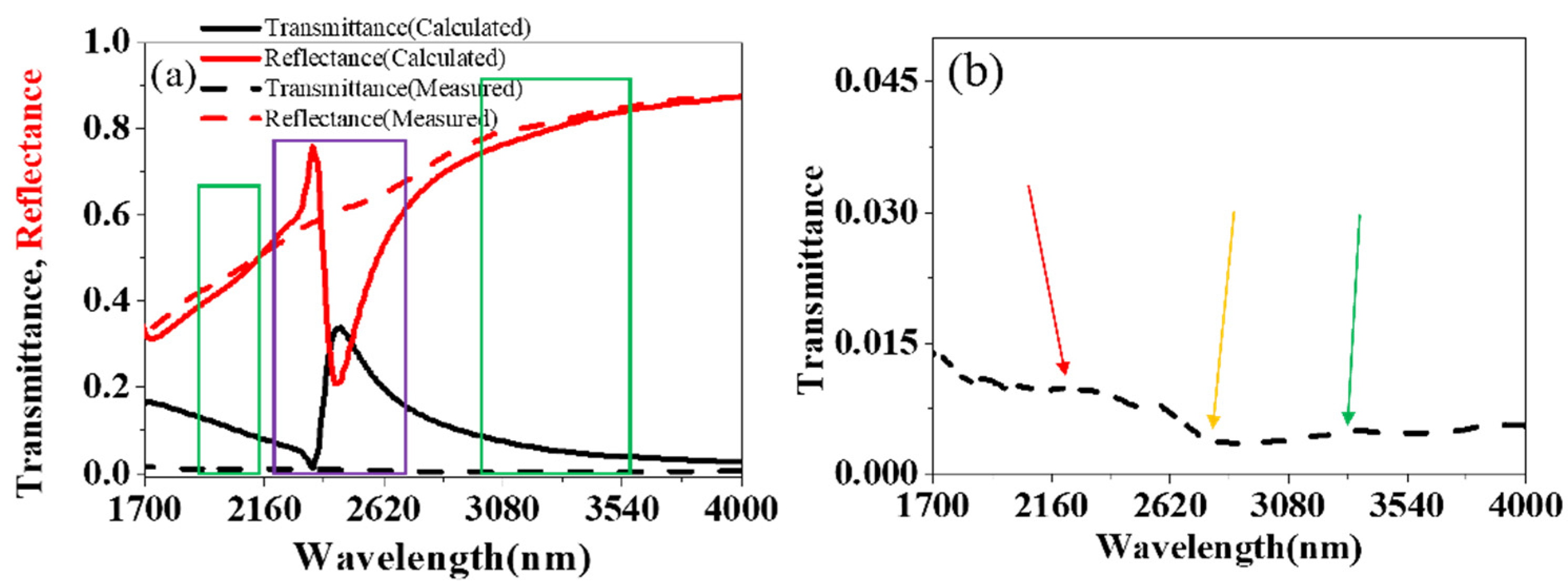
Publisher’s Note: MDPI stays neutral with regard to jurisdictional claims in published maps and institutional affiliations. |
© 2021 by the authors. Licensee MDPI, Basel, Switzerland. This article is an open access article distributed under the terms and conditions of the Creative Commons Attribution (CC BY) license (http://creativecommons.org/licenses/by/4.0/).
Share and Cite
Zhang, K.-X.; Shao, J.-D.; Hu, G.-H.; Chai, Y.-J.; He, H.-B.; Zhu, M.-P.; Li, D.-W.; Liu, X.-F. Fast Fabrication of Fishnet Optical Metamaterial Based on Femtosecond Laser Induced Stress Break Technique. Nanomaterials 2021, 11, 742. https://doi.org/10.3390/nano11030742
Zhang K-X, Shao J-D, Hu G-H, Chai Y-J, He H-B, Zhu M-P, Li D-W, Liu X-F. Fast Fabrication of Fishnet Optical Metamaterial Based on Femtosecond Laser Induced Stress Break Technique. Nanomaterials. 2021; 11(3):742. https://doi.org/10.3390/nano11030742
Chicago/Turabian StyleZhang, Kai-Xin, Jian-Da Shao, Guo-Hang Hu, Ying-Jie Chai, Hong-Bo He, Mei-Ping Zhu, Da-Wei Li, and Xiao-Feng Liu. 2021. "Fast Fabrication of Fishnet Optical Metamaterial Based on Femtosecond Laser Induced Stress Break Technique" Nanomaterials 11, no. 3: 742. https://doi.org/10.3390/nano11030742
APA StyleZhang, K.-X., Shao, J.-D., Hu, G.-H., Chai, Y.-J., He, H.-B., Zhu, M.-P., Li, D.-W., & Liu, X.-F. (2021). Fast Fabrication of Fishnet Optical Metamaterial Based on Femtosecond Laser Induced Stress Break Technique. Nanomaterials, 11(3), 742. https://doi.org/10.3390/nano11030742





